
Battle of Ternopol
Red Army forces surround and destroy the German forces at Ternopol
25 March - 15 April 1944
The battle of Ternopol, or battle of Kamianets-Podilskyi pocket was a battle in which the Red Army tried to surround and destroy the German 1st Panzer Army. This Army was part of the Army Group South. It was under the command of Hans Valentin Hube. The Soviets managed to trap in a pocket about 200.000 enemy soldiers. Under the command of Hube, and supervision of Erich von Manstein, the Germans were able to fight their way out of the pocket. In the city of Ternopol however only a handful of German soldiers managed to make it back to the German lines outside the pocket.

1 of 3
Ternopol was a largely flat area, with scattered low hills and small woods, and villages. The Seret River and its tributaries ran through the region. Located on the east bank of the river, forty kilometers from the former Polish-Russian border, was the city of Ternopol. At the point where the Seret flowed out of a marsh bordered lake a dam and bridge led across the river to the two small, rural suburbs of Zagrobela and Kukowce.
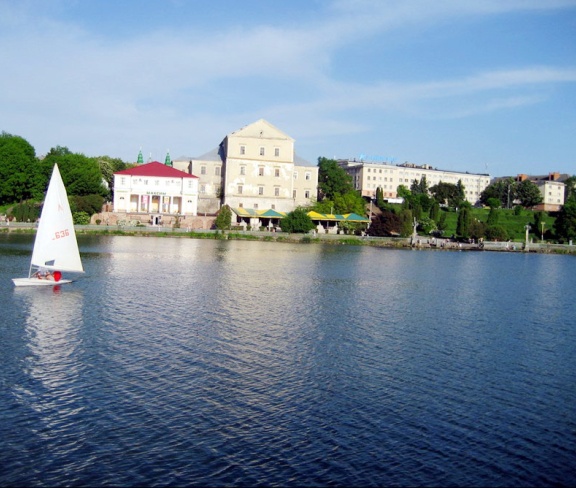
2 of 3
With its extensive metropolitan area surrounded by outlying settlements and its 35,000 inhabitants, Ternopol was certainly a significant city . It functioned as the provincial capital and a major trading center with industrial facilities, but above all as a transportation center with rail lines running north, south, east and west. With its network of streets, stone houses, municipal administration, churches, large railroad station, main post office, business, trading and market activity, it offered a typical picture of a medium-size Eastern European city.

3 of 3
In spite of its importance as a transportation center, Ternopol had never played a military role. It was a garrison city, but without any actual fortifications. Before World War One it had belonged to the Austro-Hungarian monarchy. After the Great War it became part of the newly-created Polish state. At the outbreak of World War 2 it was occupied by the Soviets and was captured by the Germans during Operation Barbarossa. Now the Russians were coming again.
During the spring the Soviets continued their offensive against the entire German Southern Front (Army Groups South and A) despite the onset of the muddy period. The Soviets attacked in several directions and pushed the German front back to Galicia, the edge of the Carpathians and the Dnestr River. The dramatic struggle for Ternopol was part of this ongoing heavy fighting. The Soviets attacked the region from 2 directions and started to surround the Germans in Ternopol. Hitler ordered the city be held at all costs. If the city fell the Germans would have had their supply lines cut.
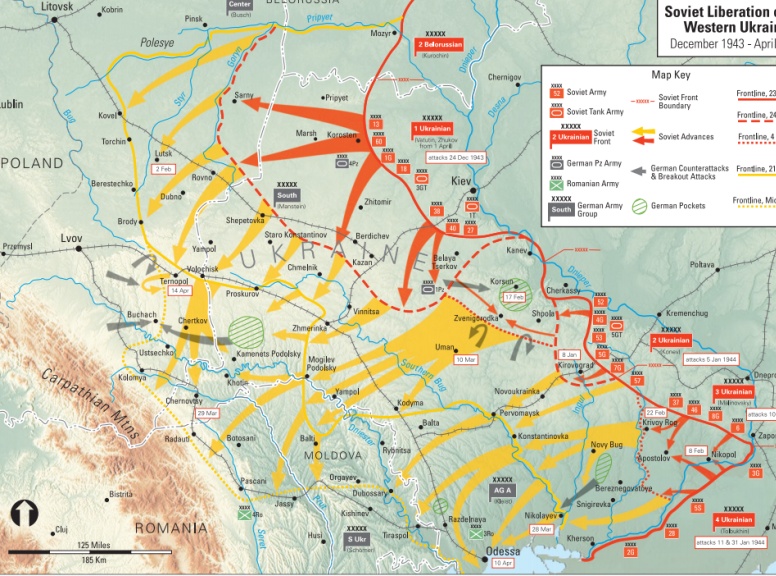
1 of 7
The Germans still held the major industrial area around Krivoi Rog in the Dnepr bend area and the manganese mines at Nikopol
together with a substantial protecting bridgehead south of the great river. A series of massive offensives by the Third and Fourth Ukrainian Fronts drove the Germans out of both areas with heavy casualties and neither the talents of the Army Group commander nor the ruthless fanaticism of General Ferdinand Schörner, one of Hitler's favorites, could contain the well equipped and carefully led Red Army units.

2 of 7
Terrible weather on the Eastern Front, wavering between freezing and thawing, heavy snow and rain, turned the Ukraine into a glutinous sea of mud. Nevertheless, the Soviets were able to maintain their uninterrupted assault on Army Group South because of two key advantages, the first in tank design and the second in support vehicles. The conventional explanation for the cross-country maneuverability of Soviet armor, particularly that of the exceptional T-34, has been the wider treads of the tanks.
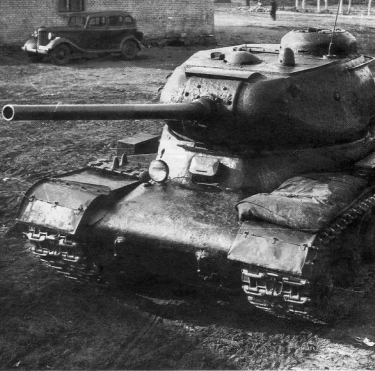
3 of 7
The Soviet advantage in tank mobility resulted largely from the fact that the center of gravity of the T-34 resided in the center rather than the front of the vehicle. German tanks, particularly the heavy Tigers and Panthers, with centers of gravity well forward, tended
to go nose down in mud, whereas the T-34s rode smoothly cross-country or over muddy roads. Added to the Soviets’ advantage in tank maneuverability was an influx of American four-wheel drive vehicles which helped move supplies to spearhead units. German mobility during the spring mud season (rasputitsa), by contrast, depended to a great extent on peasant wagons.
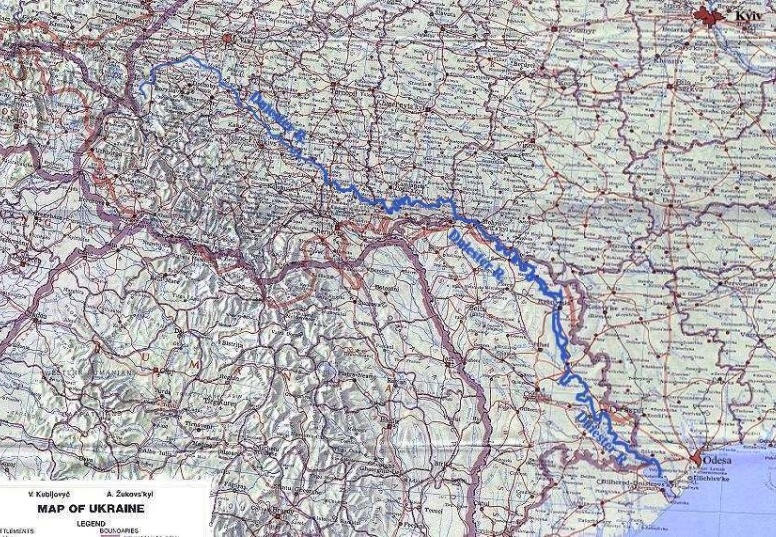
4 of 7
The STAVKA aimed to drive the Germans out of the Ukraine by spring and position the Red Army for a drive into the Balkans. The Germans continued to hope that the bad weather would halt operations. Having cleaned up the Cherkassy pocket, the Soviets redeployed, again aiming to break loose on Fourth Panzer Army’s left. Three Soviet tank armies moved to the northwestern flank of Army Group South. Manstein had attempted to strengthen Army Group South’s front in the north, but his forces remained largely rooted halfway between the Dnepr and the Bug in an indefensible sea of mud.
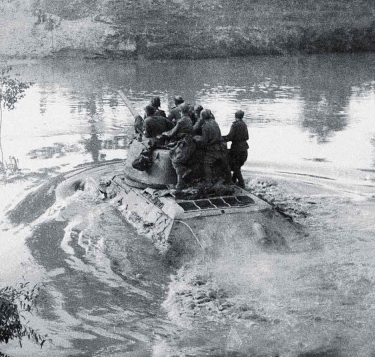
5 of 7
As they advanced, the Soviets did on this sector of the front what they had done at the Dnepr and would do over and over again thereafter: bounce the next river barrier, in this case the Ingulets, on the run, establishing bridgeheads before the Germans could establish a firm line on the river banks. Soon they reached the Dniester.
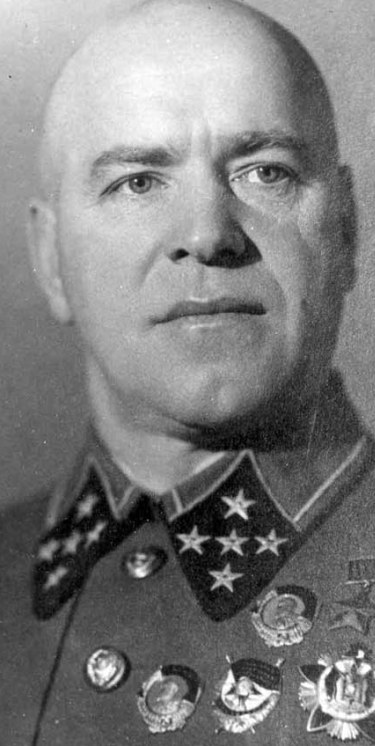
6 of 7
The Soviet First Ukrainian Front under Marshal Georgy Zhukov resumed its offensive. It advanced west of Shepetovka. after two days of heavy fighting it had smashed deep into the front held by the German Fourth Panzer Army. Near Jampol these penetrations were soon expanded into a forty-kilometer-wide breakthrough. If the Russians reached Ternopol or Proskurov, the last major rail line east of the Carpathians from Lvov to Odessa would be cut. If this happened the Germans would be forced to supply both army groups via the long route through Romania.
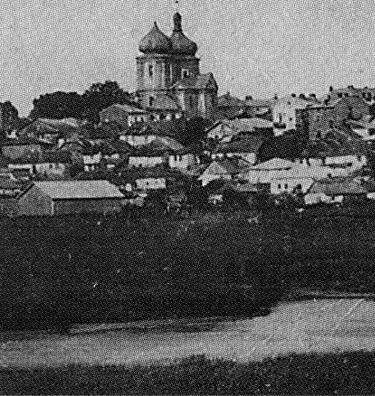
7 of 7
While the main Russian offensive continued to grind its way southward, a secondary operation saw Soviet troops advance west and southwest. They pushed the right wing of the Fourth Panzer Army back to the Seret. With great difficulty the 48th Panzer Corps, reinforced by three infantry divisions which had been rushed to the scene, was able to establish a new front. During the fighting the Soviets drove past Ternopol on two sides, and the city was threatened with encirclement. Zbaraz, not 20 kilometers away, was occupied. The same day Hitler unconditionally ordered Ternopol held, even at the threat of encirclement.
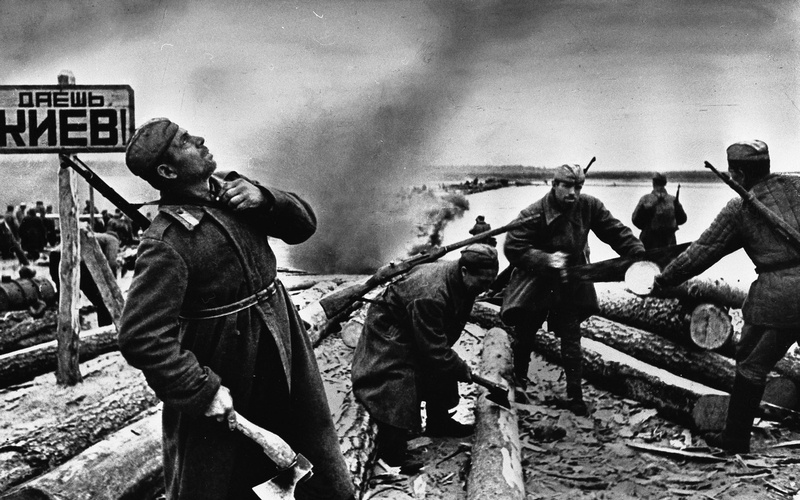
The 1943 autumn soviet offensives
After the German failed attack at Kursk the Red Army staged a series of attacks across the Eastern Front. The Soviets manged to retake the cities of Kharkov, Orel, Kiev, Bryansk and Smolensk.
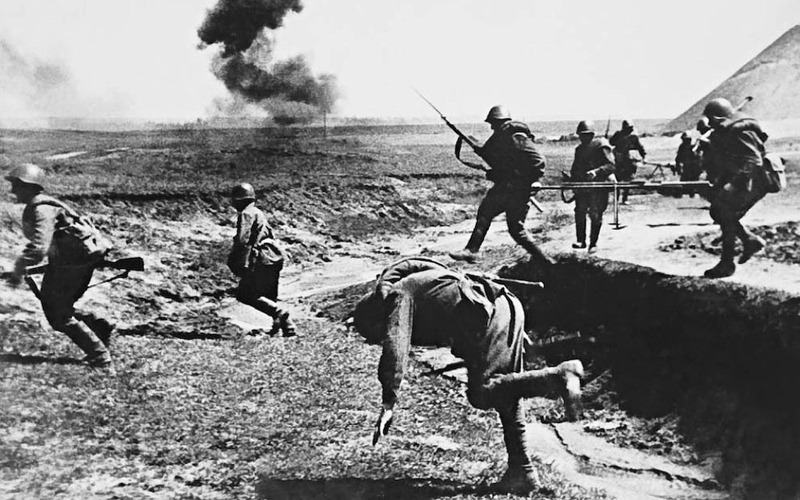
Battle of the Korsun–Cherkassy Pocket
During the Battle of the Korsun–Cherkassy Pocket the Russian Red Army tried to eradicate the encircled German forces. The Germans tried a breakthrough in order to escape encirclement, which resulted in heavy casualties. which
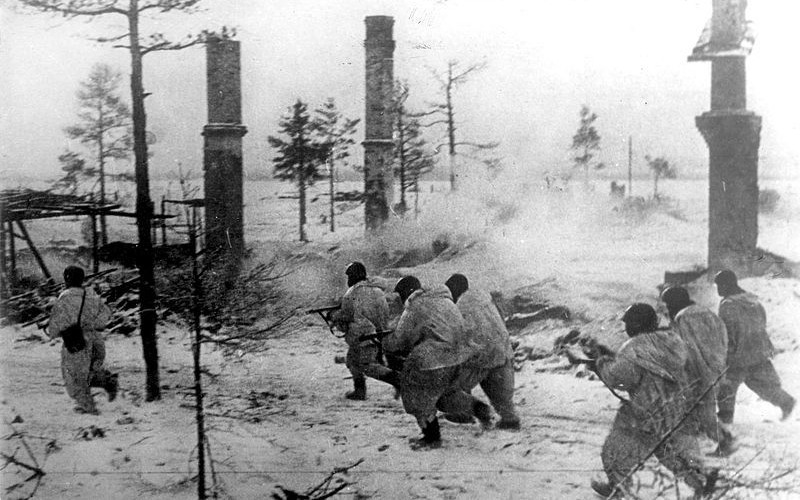
Leningrad-Novgorod Offensive
The Leningrad-Novgorod Offensive was a strategic offensive during World War Two which led to the lifting of the almost 900-day siege of Leningrad. After the bloodiest siege in human history, lasting almost 900 days, during which more than 1.1 million people died, Leningrad was finally liberated. Novgorod fell two days later as the Germans recoiled rapidly.
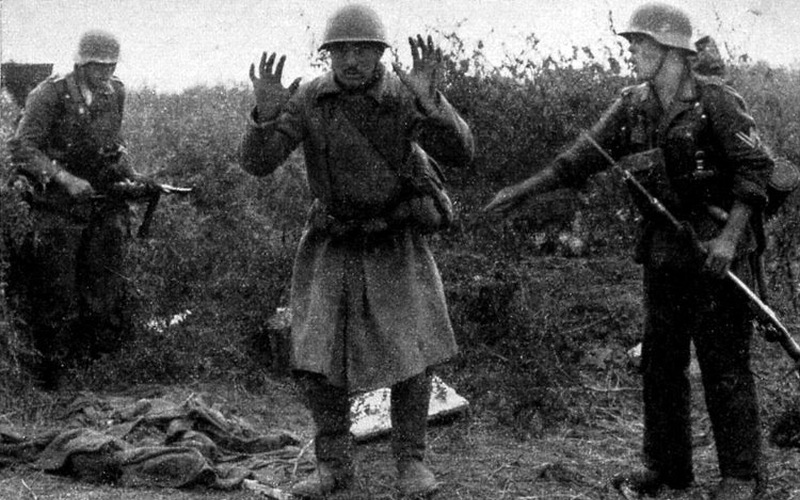
Crimean Offensive
The Crimean Offensive was a series of Red Army attacks directed against the German-held province of Crimea in southern Ukraine. German Army Group A was composed of German and Romanian soldiers. The offensive ended when the Axis forces evacuated Crimea at the city of Sevastopol. The Germans and Romanians suffered heavy casualties during the evacuation.
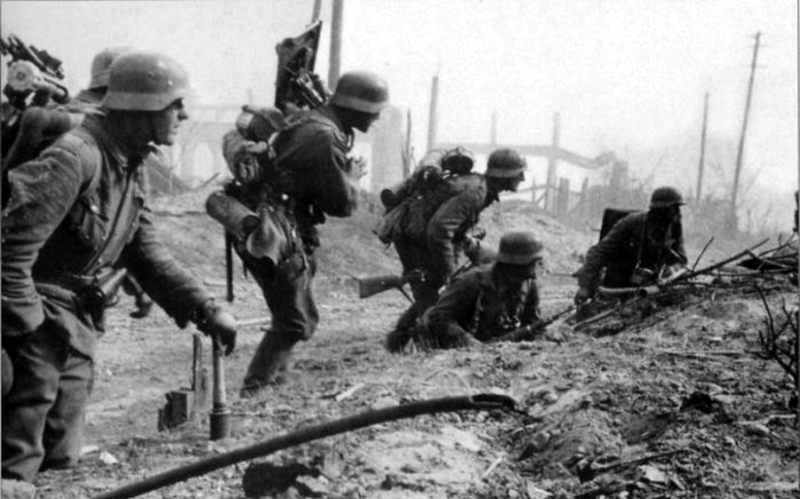
Operation Bagration
Operation Bagration was the codename for the Red Army Belorussian Strategic Offensive Operation during World War 2. This operation cleared the German troops from the Belorussian SSR and eastern Poland. The offensive was directed against the German Army Group Centre and resulted in the almost complete destruction of this Army Group.
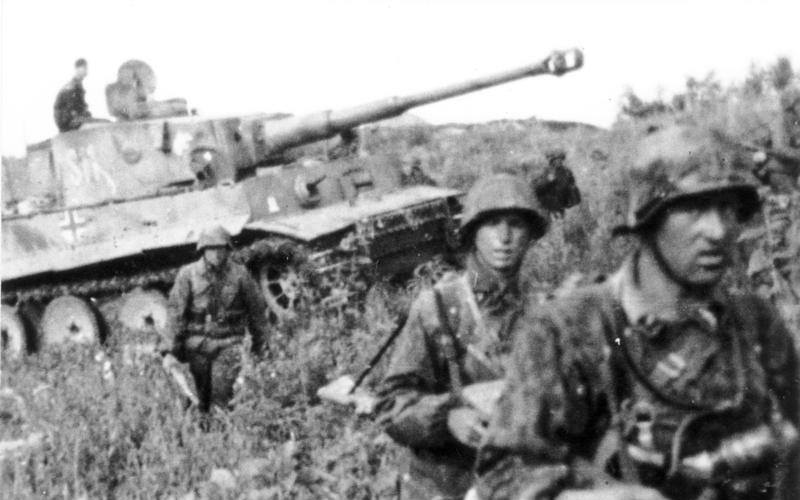
Battle of Brody
The Battle of Brody took place during the Soviet Lvov–Sandomierz Offensive. This offensive saw the formation of a pocket at Brody were a large number of German forces were surrounded and destroyed. The Lvov-Sandomierz offensive was launched so that the Germans would be dislodged out of Ukraine and Eastern Poland. The Red Army accomplished all of its objectives by the end of this offensive.
- Gerhard L. Weinberg, A World at Arms A Global History of World War Two, Cambridge University Press, Cambridge, 1994
- Andrew Roberts, The Storm of War A New History of the Second World War, Penguin Books, London, 2009
- Williamson Murray, Allan R. Millett, A War To Be Won Fighting the Second World War, Belknap Press, Cambridge, Massachusetts, 2000
- Alex Buchner, The German defensive battles on the Russian front 1944, Schiffer Publishing, Atglen, Pennsylvania, 1995





